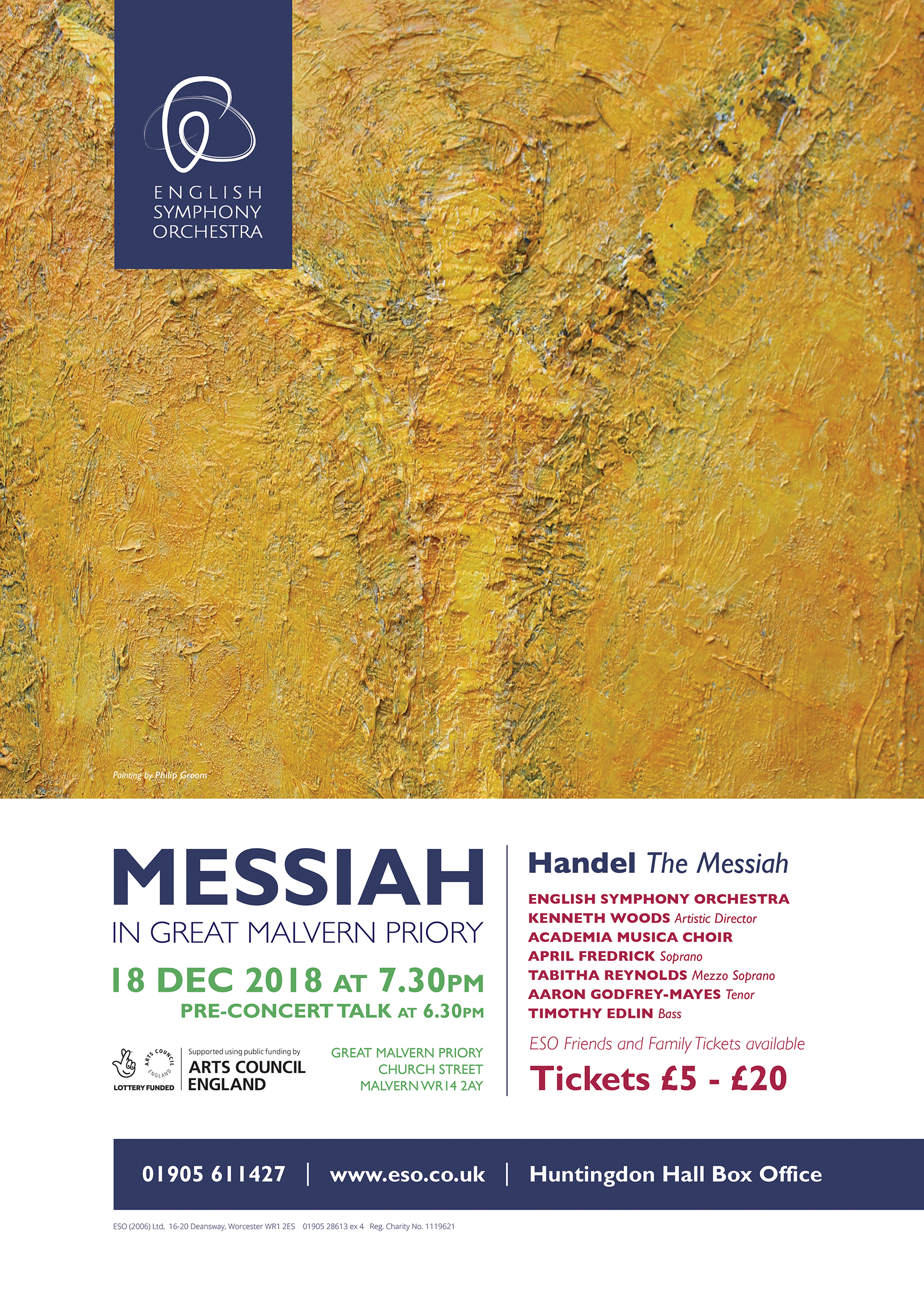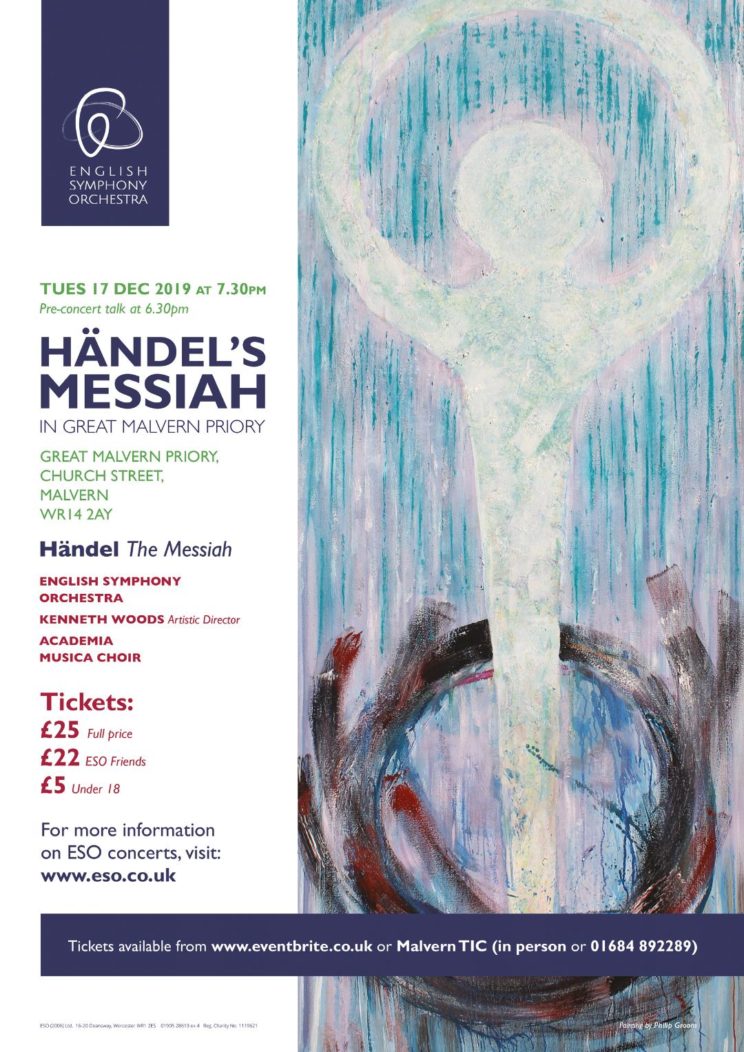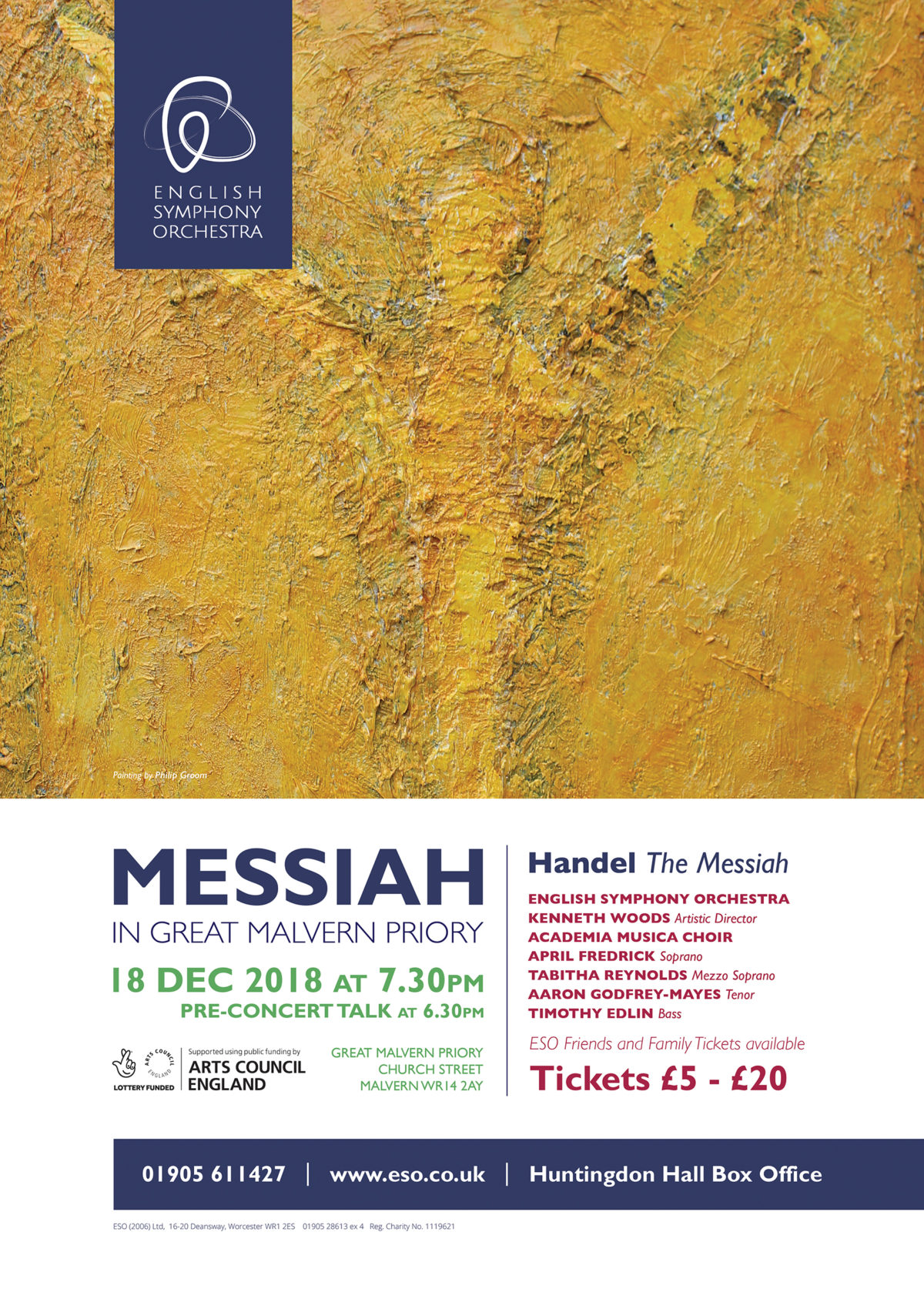William from Phoenix emailed the following over the weekend-
“Dear Maestro Woods-
I’m a regular VftP reader and young conductor about to do my own first Messiah at my church this coming week. I read your posts about the piece, but was hoping you might write a bit offering some specific musical suggestions for someone like me working on the piece for the first time….”
Well, William- since you are conducting this week, here, in haste, are a few basic concepts I hope will help guide your preparation.
1- It is generally accepted wisdom that every conductor has their “own” Messiah. This is dangerous rubbish. Try your best to set aside all your likes and dislikes, your preferences and tastes and to understand what Handel was after in the piece. Your own taste is your biggest limit as a conductor. The more you set aside your own aesthetics and prejudices and selflessly pursue those of the composer, the more distinctive, interesting and radical your own performance will become. Anything else is just a stale retread of ideas you’ve picked up from other performances that you “liked,” rather than something honest and real, developed from your own study.
2- I feel strongly that you have to study the libretto and the relationship between the words and the music in this piece in exactly the same methodical, critical and creative way as you would for any text. The Biblical origins of the words are irrelevant once they are in the piece- you have to understand them and deal with them in the context of Messiah’s very unusual balance of narrative and contemplation, and project an understanding that makes senses solely in that context.
3- Do you remember the day you first learned about meter and the teacher said that “the downbeat is the strongest beat of the bar, and the even numbered beats are the weakest?” Yeah, that! This is when that really matters! In every bar of every movement unless there is an obvious bar-line shift, suspension or syncopation at work. Ingrained in the meter of baroque music, even in slow tempi , is a constant sense of light and shade, of impulse and response and if all your beats are of equal intensity, the music dies. Phrasing and meter are inextricably linked in baroque music.
4- Vibrato is an ornament used to create expressive variety in the music. In baroque music, this means we start from non-vibrato because you ADD vibrato to create interest. This does not mean you play baroque music without vibrato, it means you encourage the players to think about when, why and how to add it, and to look for every moment in the score that is helped by it. On the other hand, since vibrato is something one adds to create interest, the corollary is that one never adds vibrato when it takes away interest. In very dissonant passages, passages with expressive suspensions, or passages with densely overlapping voice-leading, vibrato dilutes the music rather than intensifies it.
5- Try to have simple, general performance practice guidelines in mind for the whole piece that are consistent and easy to remember. Mine are-
a. All dotted rhythms such as those in “All they that see Him,” or the B section of “He was despised” are played by the strings “as it comes” and at the frog, as one would with a baroque bow. (for many years I accepted the prevailing wisdom that with a tourte bow, one should “hook” as it is more instrumentally idiomatic, but after trying it separately I changed my mind on the grounds that the separate bowing simply sounds much more musically idiomatic and stylistic). If the players complain, let them try it both ways- if they are capable players (weak ones will struggle with the as-it-comes stroke), they will hear how much better it sounds done as it was written.
b. Double dot in all places where it seems like a likely idea (such as the “Grave” of” Symphony” and “Behold the Lamb of God”)
c. Use swells or “mezza di voce” on suspensions wherever it seems likely- this means training the players to land softly on those notes (for instance the first half note in the counter-subject of the Overture, va and vc bar 25), rather than starting with any kind of a marcato attack.
d. Use Handel’s suggestions of con rip. and senza rip- it saves time explaining and he knew better. There are a handful of places in the piece where the markings are contradictory or obvious mistakes. Figure out where those are before you meet the musicians and make up your mind about to handle them.
e. Play slurs with releases- particularly two note slurs (like the beginning of For Behold, Darkness Shall Cover the Earth) should always be played with emphasis on the first note and space between the slurs
6- You have to differentiate between the actual speed and the feel of a tempo. Most quick tempi in this piece need a degree of solidity and a certain laid back quality that conductors often mistake for ponderousness. Likewise, when you conduct a movement like Rejoice Greatly at an appropriate tempo, the players may start rushing because they mis-interpret the feel you’re going for. (Also remember, your tempi in all the arias must take into account the character of your soloist’s voice- voices “spin” at their own tempi). You can get a brisk tempo to feel solid- don’t give up on it.
7- Never take a slow movement so slowly that you cannot maintain a sense of meter, with a variety of intensity on each beat in the- if all the beats start to become equally heavy, you are too slow (see no. 3 above!).
8- No two consecutive notes in the piece are the same dynamic- you must know, for every bar and beat, and be able to show clearly with your hands, whether you are “leading towards,” “falling from” or “arriving at” at every moment. Messiah, like all long baroque works, cannot withstand the failure of monotony. No stasis!
9- Any vocal cadenzas, tempo modifications or ornamentations should be a natural outgrowth of the meaning of text and not simply an opportunity for display or something your soloist’s teacher or coach told them to do. In some movements, the drama may be best served by simply having the soloist finish in time and as written rather than with one of those predictable “rallantado and cadenza” things.
10- Make all your decisions about bowings, dynamics, articulations, ornaments, cuts, shortened da capos (if any), which numbers you’re doing and which you aren’t, pronunciation, note length, soli vs ripieni and phrasing well in advance, and MARK THEM IN YOUR SCORE AND THE PARTS before the first rehearsal. There’s nothing more amateurish and wasteful than using paid orchestral service time to mark in basic things that could have been put in by you or the orchestra’s librarian months earlier- it shows a lack of preparation and a lack of respect for your colleagues. Of course, you will need to make changes in rehearsal based on the hall and the singers, but making changes is not the same thing as making it up as you go along.
11- Avoid the UNIVERSAL TEMPO at all costs.
Also, an early post (also prompted by a young conductor) here offers a few simple tips you may find relevant. Oh yes- please don’t wait between movements a second longer than you have to! Finally- remember how you were taught to breathe with the choir? It’s not just the choir you need to breathe with.
UPDATE-
12. Break any and all rules 6-11% of the time



awesomeawesomeawsome advice! Absolutely great. Read again and again and again.
Vibrato is an ornament used to create expressive variety in the music. In baroque music, this means we start from non-vibrato because you ADD vibrato to create interest. This does not mean you play baroque music without vibrato, it means you encourage the players to think about when, why and how to add it, and to look for every moment in the score that is helped by it…
YES YES!! Thank GOD there are still some real musicians our there who actually GET this!!!! In ALL music!
I feel strongly that you have to study the libretto and the relationship between the words and the music in this piece in exactly the same methodical, critical and creative way as you would for any text.
That’s not quite right, is it. Better would be, “You have to study the libretto and the relationship between the words and the music in this piece in exactly the same methodical, critical and creative way as you would for any musical drama (or music-drama).â€
ACD
Yup. I especially agree with #9 and #6: so many people use speed to avoid actual. musicianship.
Mel Strauss tells a great story about Lukas Foss and the Messiah. As Music Director in Buffalo, he had avoided doing the yearly Messiah sing-along for several years, until the board’s patience was worn out, and he couldn’t get out of the duty. So he showed up for rehearsal, begnning without any enthusiasm, until he came to the Pastoral Symphony. He stopped after a few bars, and then said: “That’s not how Handel wanted it at all.” He then gestured to an older man in the back of the second violins and asked, “Maestro, did you bring your mandolin?” They then began the Symphony again, the melody doubled by tremolo mandolin, and Foss said: “Yes, that’s how Handel wanted it.”
The Messiah is an amazingly robust piece, and can thrive under Handel’s orchestrations, with one-to-a-part orchestras or with section, or with Mozart’s marvelous re-orchestration. So, I suppose it did well with Foss, too.
On rereading my above, I see I’ve left my remark too bare, and so it appears I was merely adjusting your language. What I should have clarified is that once the concept (you should pardon the expression) of Messiah as drama is embraced fully, all your above excellent points pretty much fall into place almost of their own accord as a natural consequence.
ACD
Yes! I agree especially with #6 and #9–so often people use speed as an alternative to good musicianship, especially in the Messiah.
I would recommend trying the Mozart orchestration one of these days (he gave us a real viola part). I really like the piece in German (especially since we all know the English so well, so it is really easy to translate on the spot).
Also, regarding #4, it is really nice to be able to vibrate, especially when the mood is right. It does help to keep the music interesting, and it really helps in passages when you have to play really softly in order to support (and not overpower) a singer, to ease the kind of physical tension that can build up during a performance of such a long work.
Well…. Thanks everyone for an unusually interesting and diverse range of comments. I will be sure to respond to any future questions from William in the future.
AC- Good to hear form you – it’s been a while! Your comments left me with two things I wanted to say…
1- I intentionally didn’t say ‘music drama” because not all works with verbal texts are dramas. I could have said something clumsy that was closer to my actual meaning, but gave up at finding a concise way of saying “any piece of notated music which combines music with written language….”
2- Along these lines, Messiah is an interesting case. Handel was one of the very greatest and most gifted dramatists who ever lived. The fact that the piece doesn’t “work” purely as a drama (there’s no supsense, no character development (almost no characters!), no arc) is not because Handel didn’t know how to set a cracking good story, but because his aims were a little different. As I said above, it’s this balance between balance and contemplation you have to come to terms with as a conductor. Bach’s St Matthew Passion is a sublimely dramatic work where all of the meditaions and contemplations are seamlessly integrated into a single, convincing dramatic arc. Messiah is almost the opposite- the story comes through in spite of the fact that the libretto takes away any sense of narrative direction. This is not a flaw of the work, but a challenge for the performer…. I wouldn’t calll it a music-drama so much as a music-narrative-meditation….
I do like the Mozart orchestration a lot and would love to do it some day. A couple years ago I heard an orchestration by Parry or Stanford for about 130 piece orchestra and brass bands with 400 member chorus played by an augmented Royal Philharmonic and about 6 choirs conducted by Malcom Sargent on the radio. I bet that would be a blast to do…..
Note- I’ve added another standard performance practice thingy as 5e above…..
Thanks everyone!
Ken
Ken–
RE, your, Along these lines, Messiah is an interesting case. Handel was one of the very greatest and most gifted dramatists who ever lived. The fact that the piece doesn’t “work†purely as a drama (there’s no supsense, no character development (almost no characters!), no arc)…
That’s the standard take on Messiah all right. But do take a look at the following piece, please, and see whether it changes your thinking a bit:
http://www.soundsandfury.com/soundsandfury/2005/12/new_reading_of_.html
ACD
I should have noted that a detailed demonstration of the principles declared in the opening grafs of the above linked piece is part and parcel of the CD review. I note this here as you might be tempted to think those opening grafs are merely introduction to a typical CD review. They’re not. They’re in fact what that piece is really about.
ACD
Hi AC-
Yes- I remember this post well. Lots and lots in there that I quite agree with. I don’t think we’re too far apart, and perhaps my post seems to be balanced a bit more towards “Messiah isn’t a drama” because I’m coming at it from the perspective of how to make the piece work in performance, which means knowing where the traps are for the performer. If you’re doing St Matthew Passion with a fantastic evangelist, you (the conductor) don’t have to worry about the audience feeling a sense of momentum and investment in the story itself. On the other hand, in Messiah, as you rightly point out, the drama is commented on and mediated about (perhaps by your chorus of villagers) rather than narrrated. Handel must have surely known what he was leaving out of this piece- he was an opera composer first and foremost. That doesn’t mean he didn’t want the listener to be invested in the story, but that the story, by itself, isn’t what he wants us to think of most. He wants us to think about the meaning of the story- to contemplate and experience…..
Thanks again-
Ken
Plus there are singers (singers!) involved. Wow.
An interesting read on this subject from the Guardian-
link to http://music.guardian.co.uk/classical/story/0,,2229170,00.html
greetings. while i am in most general agreement with everything you write i have one glaring exception – #5 (b). “Behold the Lamb” is most certainly should NOT be doubled. i know that many people do, but try it sometime as a slow, simple grave around 52 to the quarter. it works. there is a sense of awe that cannot be conveyed in the martial double dot style. much better than when it is doubled.